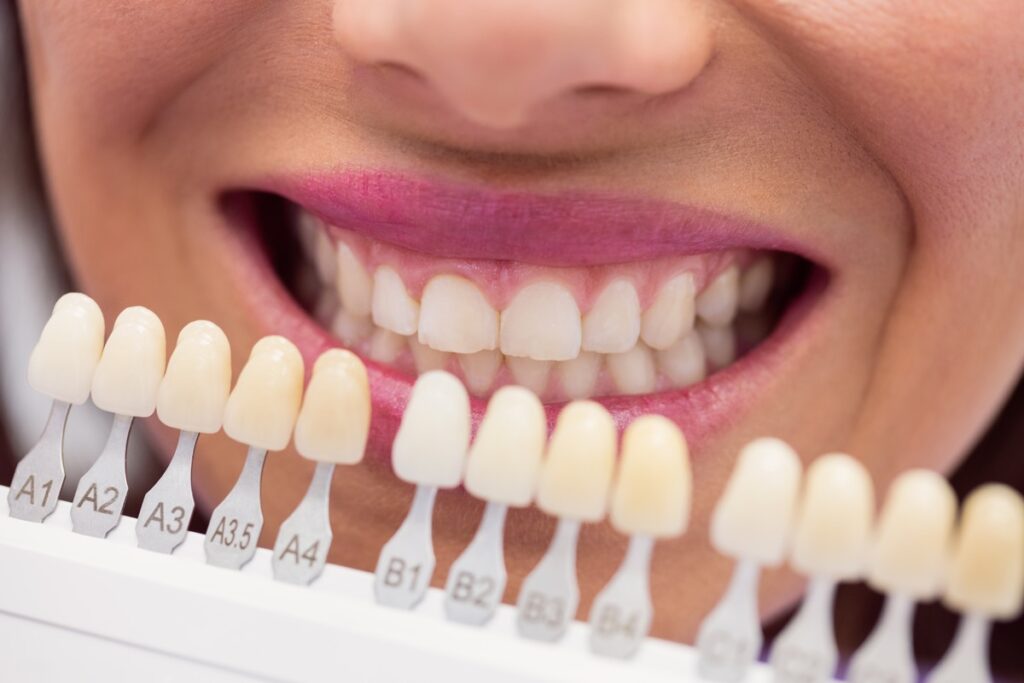Bonding Application (Composite Veneer)
- Home
- Our Treatments
- Aesthetic Dentistry
- Bonding Application (Composite Veneer)

Bonding Application (Composite Veneer)
The bonding application is a widely used treatment method in the field of aesthetic dentistry. It is preferred to correct minor imperfections in the teeth, eliminate discolorations, improve shape irregularities, and provide a more aesthetic appearance to the teeth. This method offers quick and effective results. Since bonding is a minimally invasive procedure, it provides a comfortable alternative for patients.What Is Bonding?
Bonding is the process of applying a composite resin, which is an aesthetic material, onto the teeth. The composite resin is shaped to fit the tooth and mimic the natural color and form of the tooth. Since this material adheres strongly to the tooth, a durable and long-lasting result is achieved. The bonding application can be used to correct tooth shape irregularities, repair cracks, close gaps, or improve tooth color.Advantages of Bonding Application
1. Fast and Easy Application
Bonding treatment can usually be completed in a single dental visit. The composite resin is applied, shaped, and hardened on the tooth. Compared to other aesthetic dental treatments, it is a much faster process.2. Minimally Invasive Method
Bonding is a procedure that requires little to no enamel removal. It can be easily applied without damaging the natural structure of the tooth. This means a low-risk and comfortable treatment option for patients.3. Natural Appearance
The composite resin is selected to match the natural color of the tooth, and when applied, it mimics the texture and appearance of natural teeth. As a result, the outcome is highly aesthetic, natural, and visually pleasing.4. Low Cost
Bonding is a more economical alternative compared to other aesthetic dental treatments such as porcelain veneers or prosthetics. It offers an attractive solution for patients seeking an aesthetic improvement at a more affordable cost.5. Solution for Various Aesthetic Problems
Bonding can correct discolorations, minor cracks, fractures, gaps between teeth, or small-sized teeth. The procedure can be customized according to individual needs.Steps of the Bonding Application
1. Initial Evaluation and Planning
The dentist evaluates the patient’s oral health and determines whether bonding is suitable. The necessary areas are identified, and a treatment plan is created.2. Tooth Preparation
During the bonding process, minimal tooth surface reduction may be required. This step ensures better adhesion of the composite resin to the tooth. Local anesthesia is usually not necessary, as the procedure involves minimal intervention on the tooth structure.3. Application of Composite Resin
A composite resin in a color matching the tooth is applied and shaped. The material is carefully layered to achieve a natural tooth appearance. The dentist shapes the material to reach the desired final result.4. Light Curing
The composite resin is hardened using a special curing light. This ensures that the material adheres strongly to the tooth.5. Final Touches and Polishing
After the resin is hardened, the dentist makes final adjustments to refine the tooth’s shape and surface. Finally, the tooth is polished to achieve a smooth and natural appearance.Who Is It Suitable For?
- Individuals with minor cracks or chips in their teeth
- Those who want to close small gaps between their teeth
- Those who wish to correct uneven tooth color tones
- Individuals looking for a quick and affordable aesthetic solution
Frequently Asked Questions
Does the Bonding Procedure Hurt?
The bonding procedure is generally painless. Since the need for tooth reduction is minimal, most patients do not require local anesthesia. However, in some cases, a small amount of enamel may be removed, which could cause slight discomfort. Overall, the procedure is pain-free.How Long Does Bonding Last?
Bonding typically lasts between 5 to 10 years, depending on personal oral hygiene habits and how well the teeth are cared for. Regular dental care, avoiding smoking, and refraining from hard foods can extend the life of the bonding. However, the composite material may wear down or change color over time.Is Any Maintenance Required After the Bonding Procedure?
After bonding, no special maintenance is required, but maintaining good oral hygiene is essential. Regular brushing and flossing help prolong the life of the bonding. It is also recommended to avoid excessive consumption of substances that cause discoloration, such as tea, coffee, and tobacco.Is Bonding Suitable for Everyone?
Bonding is generally suitable for anyone with healthy teeth who requires minor aesthetic corrections. However, it may not be appropriate for individuals with large cavities, advanced gum disease, or severe dental deformities.Aesthetic Dentistry
Appointment Form
Please fill out the form below, and our team will contact you shortly.
Why Reyhan Arıkan?
We bring together knowledge, experience, and technology.
Your Smile Is Our Priority
With our experienced team, we are here for you to achieve healthy and beautiful smiles.
Reliable Dental Health
We add value to your smiles with over 20 years of experience and a modern approach.
Happy Patients
The satisfaction of thousands of our patients is our greatest achievement.
Our doctors
Our doctors are always by your side.
At our clinic, we offer you the most up-to-date treatment methods with our physicians, each of whom is an expert in their field. We are here to help you achieve a healthy and aesthetic smile with our experience, care, and modern technology.

Reyhan Arıkan
Dentist

Elif Seymen
Dentist

